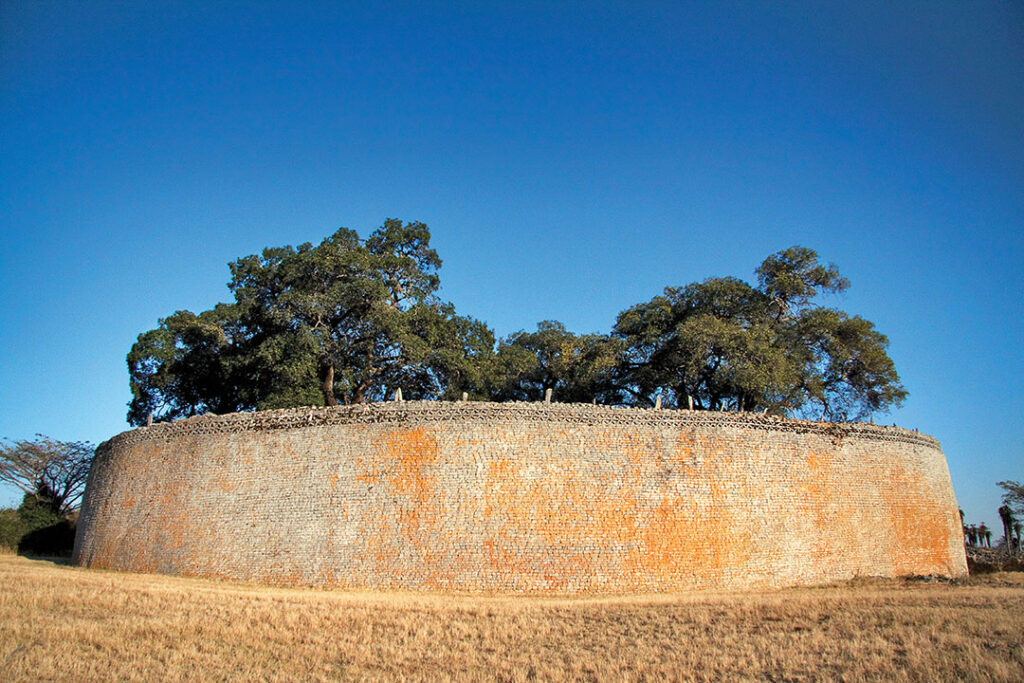ADF STAFF
Great Zimbabwe is mostly deserted now, but in its time it was a wondrous place.
Historians believe that members of what is now the Shona tribe began work on the city-state Great Zimbabwe in the ninth century, with its heyday from about 1200 to 1300. It covered 720 hectares and was home to an estimated 10,000 people at its peak.
Its centerpiece is a structure called the Great Enclosure. Craftsmen built it, stacking more than a million stones, with no mortar, with a precision that is evident to this day. It is the largest ancient structure in all of Sub-Saharan Africa.
Its elliptical outer wall is 250 meters in circumference and is 11 meters high at its tallest point. An inner wall running parallel to the outer wall forms a narrow passage, 55 meters long, leading to a conical tower. The tower, 10 meters high and 5 meters across, may have symbolized a grain bin. Or it may have had no meaning other than as an embellishment, like the row of chevrons nearby.
It was such a source of pride to the region that when Rhodesia gained independence in 1980, Prime Minister Robert Mugabe changed the name of the country to Zimbabwe, which translates as “house of stone.”
At its peak, it was a thriving city, known for its gold mining and as a regional trading hub. But for all of its influence, it could not sustain itself. People began deserting the region about 1450. It was abandoned within a few years.
Zimbabwean archeologist Shadreck Chirikure has made it his life’s work to prove that Great Zimbabwe is an important part of history. His findings have been recognized and honored internationally.
Several theories exist for the decline and eventual abandonment of Great Zimbabwe. Some say the area became overpopulated and could not produce enough food. Although it once was a trading mecca, it might have lost its business to trading regions further north. Another theory is that it was supported by gold mining and could not sustain itself after the mines were exhausted.
Some researchers have suggested that famines, water shortages and political instability caused Great Zimbabwe to outlive its usefulness. Most of the theories point to evidence that Great Zimbabwe ran out of resources.
“We don’t learn from the past as much as we should,” Chirikure told The Economist in 2021. “Here is a place that was occupied by people who were heavily invested in production, who developed regional links, who were also interacting with other parts of the world — and they built a place with such strength and resilience.”

